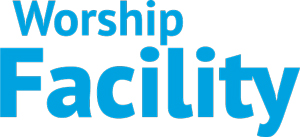It is commonly believed that creative individuals thrive when they have freedom. However, from my experience, creativity is most effective for organizational requirements when there are clear parameters within which it must operate. Surprisingly, creatives often produce their best work when faced with constraints. These constraints could stem from budget limitations, time pressure, or specific project briefs.
I have observed that some of the most creative people I know do their best work when they are working under tight deadlines. Constraints from a project brief, where a creative professional is directed to create something that aligns with a specific message or similar restrictions, can also lead to remarkable creative outcomes.
It’s vital to strike a balance. While providing creatives with as much freedom as possible is essential, we must also ensure that their work aligns with our overarching goals and objectives as leaders. Thus, giving our creative teams some basic guidelines is essential to ensure that the media content they produce is effective and meets our requirements. However, it is crucial to balance this with allowing them freedom during the process. It’s essential to resist the temptation to exert excessive control or micromanage, as these tendencies can stifle creativity.
I compare the guidelines we need to follow to the “bumpers” added to a bowling lane. These bumpers help direct the bowling ball towards the pins, preventing it from ending up in the gutter. They don’t limit the bowler in any way, and they can still score a strike without touching a bumper. The bumpers ensure that the ball hits the pins and achieves its goal.
Let’s explore some practical guidelines for implementation in our digital ministries. Your creative content should always align with your church’s mission, vision, and values. It’s crucial to avoid being swayed by the latest trends and compromising to reach more people.
Remember the four key areas
Your guidelines should address the following four areas: why, who, what, and how. Working through these will help you establish a clear framework for all your activities.
First and foremost, always remember WHY you do what you do. Your church media should always focus on spreading the message of faith and engaging your community. It should be used to connect with your congregation or attract new members. This is an extension of what Jesus commanded us in Matthew 28 (the Great Commission) to “go and make disciples”. Everything starts and ends here.
Next, it is about your who. Always keep your audience in mind when creating church media. Consider their needs, interests, and challenges, and develop content that connects with them and reflects their experiences. Clearly defining your audience is crucial for creating impactful and relevant content. It’s common to overlook this step and assume that your content applies to everyone, but this usually means it doesn’t truly connect with anyone. To ensure the effectiveness of your content, it’s essential to tailor it to a specific audience.
Regarding the WHAT of your church media, we need to circle back to your mission, vision, and values and ensure that what you create is aligned with this. Your media should reflect who you are as a church and align with the reality of what people experience when they are with you in person. Authenticity is paramount here. If you create media content that is not true to who you are, eventually, people will see through that, and your credibility will suffer.
Remember to improve HOW you work continuously. Invest in training and resources to enhance your skills and creativity. Stay updated with the latest technologies and best practices, and always be open to trying new things. If you need help, I would love to have a conversation with you. Training should be an ongoing investment in your teams. It can be challenging to know where to start, so I would appreciate the opportunity to assist you with that.
Creativity in an organization works best when it operates within clear guidelines. Considering these four areas will help you establish appropriate and specific guidelines for your digital ministry, which should not only reflect the vision, mission, and values of your church but also ensure alignment with your purpose (WHY), audience (WHO), content (WHAT), and approach (HOW).
By doing so, you will also ensure that your creative team works in an environment that allows freedom while having “bumpers” in place to keep them on track.
Using media to connect with our community and communicate our message is essential. This requires creativity, and we should always strive to improve.
What guidelines would you suggest adding, or what strategies have you found helpful in your context?
About the author
Graeme is a pioneer in Christian Media with over 25 years of experience. With a particular skill in live television, he has produced and directed some of the largest Christian events over the past two decades. Having worked in the USA, UK, Europe, Africa, Israel, Hong Kong, India, South America and Australia, Graeme is highly regarded within the industry as a Christian media professional. He has produced thousands of hours of world class Christian television, won numerous awards and worked with some of the best-known Christian ministers. Before founding Media Mentoring, Graeme was the Chief Operating Officer of GOD TV. You may email him at graeme@cloakproductions.com.

